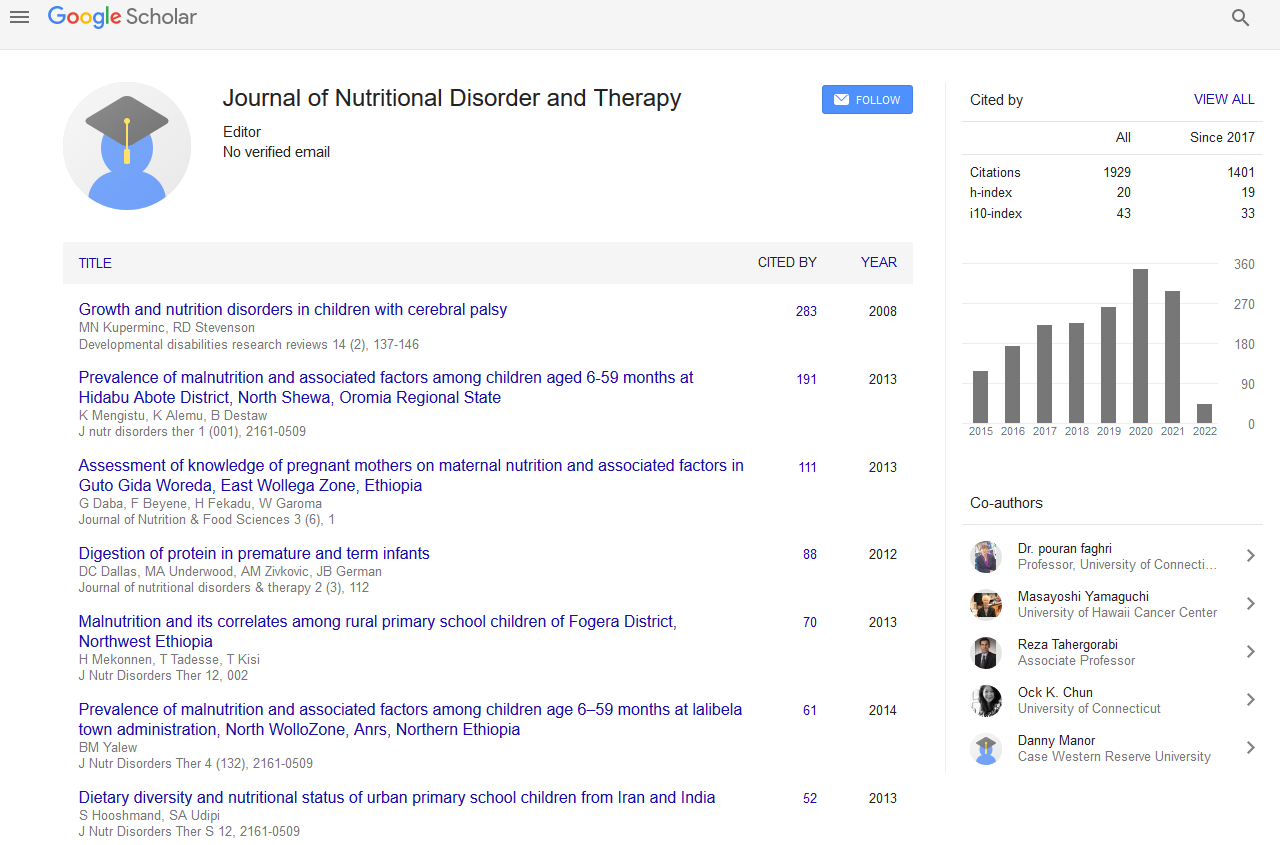Indexed In
- Open J Gate
- Genamics JournalSeek
- Academic Keys
- JournalTOCs
- Ulrich's Periodicals Directory
- RefSeek
- Hamdard University
- EBSCO A-Z
- OCLC- WorldCat
- Publons
- Geneva Foundation for Medical Education and Research
- Euro Pub
Useful Links
Share This Page
Journal Flyer

Open Access Journals
- Agri and Aquaculture
- Biochemistry
- Bioinformatics & Systems Biology
- Business & Management
- Chemistry
- Clinical Sciences
- Engineering
- Food & Nutrition
- General Science
- Genetics & Molecular Biology
- Immunology & Microbiology
- Medical Sciences
- Neuroscience & Psychology
- Nursing & Health Care
- Pharmaceutical Sciences
Abstract
Survival Status and Predictors of Mortality among Children Aged 0-59 Months with Severe Acute Malnutrition Admitted to Stabilization Center at Sekota Hospital Waghemra Zone
Background: The mortality rate of children with complicated severe acute malnutrition that receive treatment in inpatient set ups has remained unacceptably high. Such high mortality in inpatient units has been attributed to either co-morbidity such as Human Immune Virus, Tuberculosis, diarrhea and malaria or due to poor adherence to the World Health Organization therapeutic guidelines for the management of severe acute malnutrition.
Objective: To assess survival status and identify the predictors of mortality among children aged 0-59 months with severe acute malnutrition admitted to stabilization center in Sekota hospital, Waghemra zone of Amhara region.
Method: A retrospective cohort was conducted on 415 children aged 0-59 months who were admitted for complicated severe acute malnutrition at Sekota hospital from January1/2011 to December 30/2013. The data collection was undertaken from March 15-25, 2014 using standardized checklist. Data were cleaned, edited and entered by Epi data version 3.1. and analysed by SPSS version 16.0. Descriptive summary of child characteristics and outcome of interests were computed by using tables, graphs and Kaplan Meier curves. After checking for assumptions Cox- proportional regression model was used to identify the potential predictors of survival status. Finally variables that had P-value < 0.25 in bivariate analysis were candidates for multivariate analysis to determine independent predictors of mortality.
Results: From 441 expected samples, the data were collected on 415 children with baseline records. The most frequently 185(44.6%) associated co-morbid was diarrhoea. Independent predictors of mortality were Malaria (AHR= 2.13, 95% CI = 1.12.7.15), severe anemia (AHR = 6.71, 95% CI: 3.22, 13.97). And TB (AHR= 2.88, 95%CI = 1.72, 4.65). Other predictors of mortality of the children were: children not supplemented folic acid (AHR=2.30, 95% CI=1.54, 3.4), not supplemented for vitamin A (ARH= 1.53, 95% CI= 1.05, 2.24) and children not managed by intravenous antibiotic (AHR= 2.73, 95%CI = 1.9, 4.0). Conclusion: The overall mortality among children aged 0-59 months with complicated SAM admitted to Sekota hospital was higher than the minimum SPHERE standard for stabilization centers. The majority of death was attributed to malaria, severe anemia, TB and mismanagement of complicated severe acute malnutrition. So improving this gap may have paramount effect on child survival.


